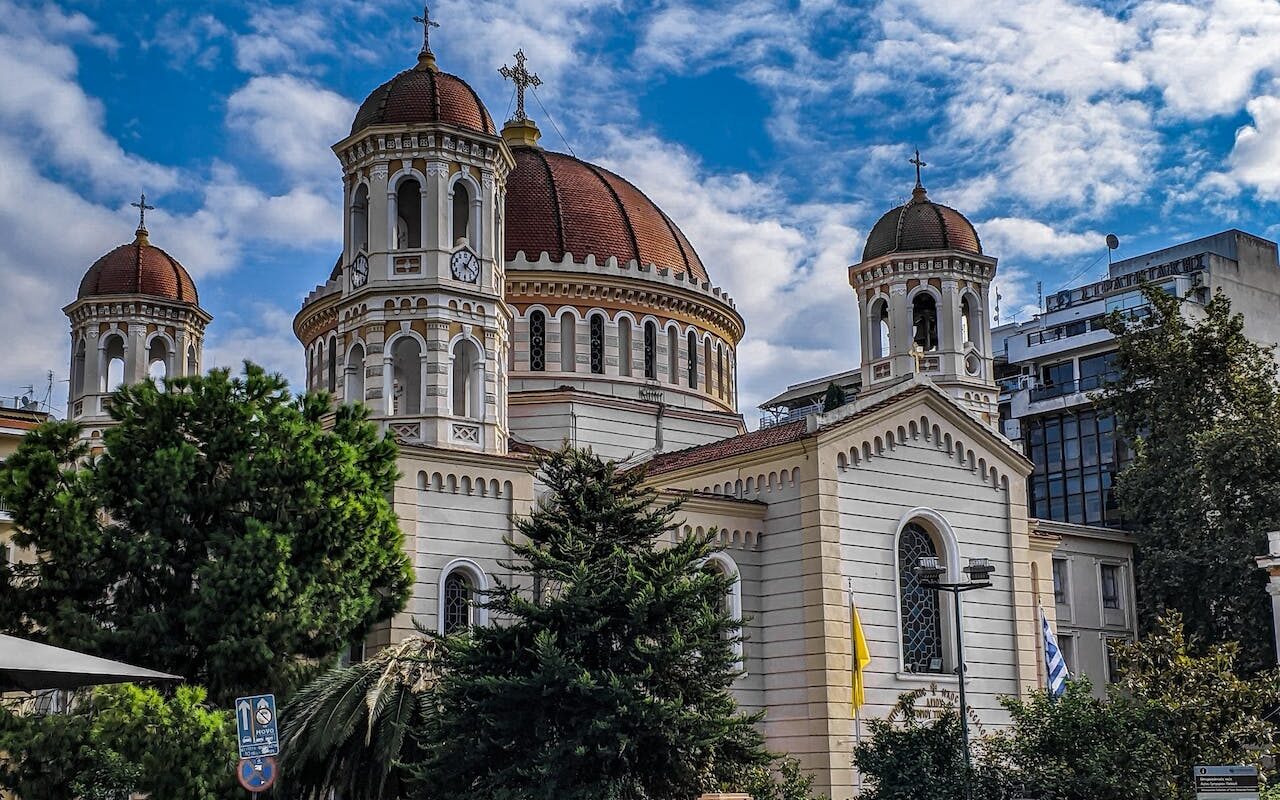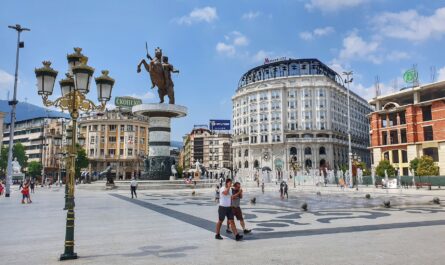Located on the shores of the Thermaic Gulf, Thessaloniki, Greece’s second-largest city, is a captivating blend of ancient history and contemporary charm. This city, named after the sister of Alexander the Great, has witnessed the rise and fall of empires, making it a living testament to the passage of time. In this blog, we will explore how Thessaloniki seamlessly intertwines its rich historical tapestry with the vibrancy of modern life.
A Tapestry of History
Thessaloniki boasts a history that spans over two millennia. Founded in 315 BC by Cassander of Macedon, the city quickly became a pivotal hub of the ancient world. Over the centuries, it passed through the hands of the Romans, Byzantines, Ottomans, and more, each leaving an indelible mark on its culture and architecture. One of the city’s most iconic landmarks is the White Tower, a symbol of Thessaloniki’s complex history. Originally constructed by the Ottomans in the 15th century, it has served various purposes, from a fortress to a prison. Today, the White Tower stands as a monument to the city’s resilience and adaptability.
The Ano Poli District: Preserving the Past
To truly immerse oneself in Thessaloniki’s historical charm, a visit to the Ano Poli district is a must. The name “Ano Poli” translates to “Upper Town,” and it is the oldest part of the city. Wandering through its narrow cobblestone streets feels like stepping back in time. Traditional Macedonian houses, adorned with colorful flowers, line the alleys, creating a picturesque scene.
The Eptapyrgio Fortress, also known as the Seven Towers, stands proudly in Ano Poli. Built during the Byzantine era and later expanded by the Ottomans, this fortress offers breathtaking panoramic views of the city. It’s a testament to the strategic importance of Thessaloniki throughout history.
A Walk Through Time: The Rotunda and Arch of Galerius
As you meander through the city, you’ll encounter architectural marvels that bridge the gap between the past and the present. The Rotunda, initially intended as a mausoleum for Roman Emperor Galerius, showcases intricate mosaics and awe-inspiring architecture. Over the centuries, it has served as a mausoleum, church, and mosque, reflecting the city’s diverse cultural influences.
Adjacent to the Rotunda stands the Arch of Galerius, a triumphal arch built to commemorate Galerius’ victory over the Persians. The arch is adorned with detailed reliefs depicting scenes of battle and imperial grandeur. This juxtaposition of ancient monuments against a backdrop of modern city life encapsulates the essence of Thessaloniki’s unique character.
Vibrant Street Life: Aristotelous Square and Beyond
Thessaloniki’s heart beats in Aristotelous Square, a bustling gathering place that encapsulates the city’s modern energy. Lined with neoclassical buildings, trendy cafes, and designer boutiques, the square is a testament to Thessaloniki’s contemporary allure. Locals and visitors alike converge here, creating a lively atmosphere that embodies the spirit of the city.
Beyond Aristotelous Square, the city’s streets are alive with street art, quirky shops, and a vibrant nightlife.
Thessaloniki’s Cultural Kaleidoscope
Thessaloniki’s cultural vibrancy is a kaleidoscope of influences from the various civilizations that have shaped its identity. The city’s museums are treasure troves that unveil the layers of its history. The Archaeological Museum of Thessaloniki, for instance, showcases artifacts spanning from the prehistoric to the Byzantine periods. The Museum of Byzantine Culture immerses visitors in the art and history of the Byzantine Empire, a significant chapter in Thessaloniki’s past.
The city’s commitment to the arts is evident in its annual International Film Festival, drawing filmmakers and cinephiles from around the world. Additionally, the Thessaloniki Concert Hall hosts performances that span genres, from classical to contemporary, embodying the city’s eclectic artistic spirit.
Religious Heritage
Thessaloniki’s skyline is punctuated by numerous churches that narrate the city’s religious history. The Church of Agios Demetrios, dedicated to the patron saint of Thessaloniki, is a masterpiece of Byzantine architecture. Its stunning mosaics and rich iconography offer a glimpse into the spiritual legacy of the city.
The Rotunda, mentioned earlier for its historical significance, has played a pivotal role in Thessaloniki’s religious landscape. It has transitioned from a pagan mausoleum to a Christian church and later a mosque during the Ottoman era. This transformation mirrors the city’s ability to adapt and incorporate diverse cultural influences.
St. Gregory Palamas Holy Metropolitan Church: A Spiritual Oasis Amidst History and Modernity
Amidst the rich tapestry of Thessaloniki’s historical and modern landmarks, the St. Gregory Palamas Holy Metropolitan Church stands as a spiritual oasis. Named after the revered 14th-century Archbishop of Thessaloniki, St. Gregory Palamas, this Orthodox church adds a profound layer to the city’s religious and cultural heritage.
Throughout the year, the St. Gregory Palamas Church becomes a focal point for religious festivals and celebrations. Whether it’s the feast day of St. Gregory Palamas or other significant Orthodox Christian events, the church comes alive with ceremonies, processions, and a palpable sense of devotion.
Educational Hub: Aristotle University
Thessaloniki’s modernity is further emphasized by Aristotle University, one of the oldest and most prestigious universities in Southeast Europe. Named after the ancient Greek philosopher Aristotle, the university contributes to the city’s youthful energy, attracting students from around the world. The campus is a hub of intellectual discourse, fostering innovation and academic excellence.
The juxtaposition of the university’s modern facilities against the backdrop of historical landmarks like the Rotunda and the Arch of Galerius is a testament to Thessaloniki’s harmonious blend of the old and the new. Students studying in this city walk in the footsteps of great philosophers, embracing both tradition and progress.
Waterfront Magic
Thessaloniki’s seaside charm is embodied by its stunning waterfront, where locals and visitors alike gather to enjoy breathtaking sunsets over the Thermaic Gulf. The city’s waterfront promenade is adorned with sculptures, parks, and cafes, providing a picturesque setting for leisurely strolls and moments of contemplation.
The White Tower, standing sentinel at the water’s edge, not only serves as a historic landmark but also offers panoramic views of the Aegean Sea and Mount Olympus. This merging of ancient history with natural beauty creates an enchanting atmosphere, making the waterfront an integral part of Thessaloniki’s allure.
Community Spirit
Thessaloniki’s charm is not only rooted in its architectural and historical grandeur but also in the warmth of its people. The city’s residents, known for their hospitality, take pride in sharing their cultural heritage with visitors. Traditional celebrations, such as the annual Thessaloniki International Fair, bring the community together to celebrate the city’s economic and cultural achievements.
The city’s markets, like Modiano and Kapani, are bustling hubs of activity where locals and tourists converge to explore the array of fresh produce, spices, and artisanal products. Engaging with the community in these vibrant spaces provides a genuine taste of Thessaloniki’s daily life.
Sustainable Initiatives
Thessaloniki’s commitment to sustainability adds another layer to its modern identity. The city has embraced green initiatives, with parks and green spaces interspersed throughout its urban landscape. Cycling paths and pedestrian-friendly zones encourage eco-friendly modes of transportation, reflecting a forward-thinking approach to urban planning.
Additionally, Thessaloniki’s efforts to promote local products and sustainable practices in its culinary scene contribute to a more eco-conscious lifestyle. From farm-to-table dining experiences to local markets supporting small producers, the city is carving a path toward a greener, more sustainable future.
Conclusion
Thessaloniki, with its captivating blend of history and modernity, offers a unique narrative that unfolds with every step taken within its boundaries. From the ancient monuments that whisper tales of bygone eras to the vibrant streets pulsating with contemporary energy, the city encapsulates a timeless essence.
Thessaloniki beckons travelers not just to witness its historical monuments or indulge in its culinary delights but to immerse themselves in the ebb and flow of a city that seamlessly intertwines its past and present. It is a place where the echoes of ancient civilizations resonate alongside the laughter of today’s youth, creating a symphony that captures the essence of Thessaloniki – a city where history meets modernity in a dance that transcends time.



